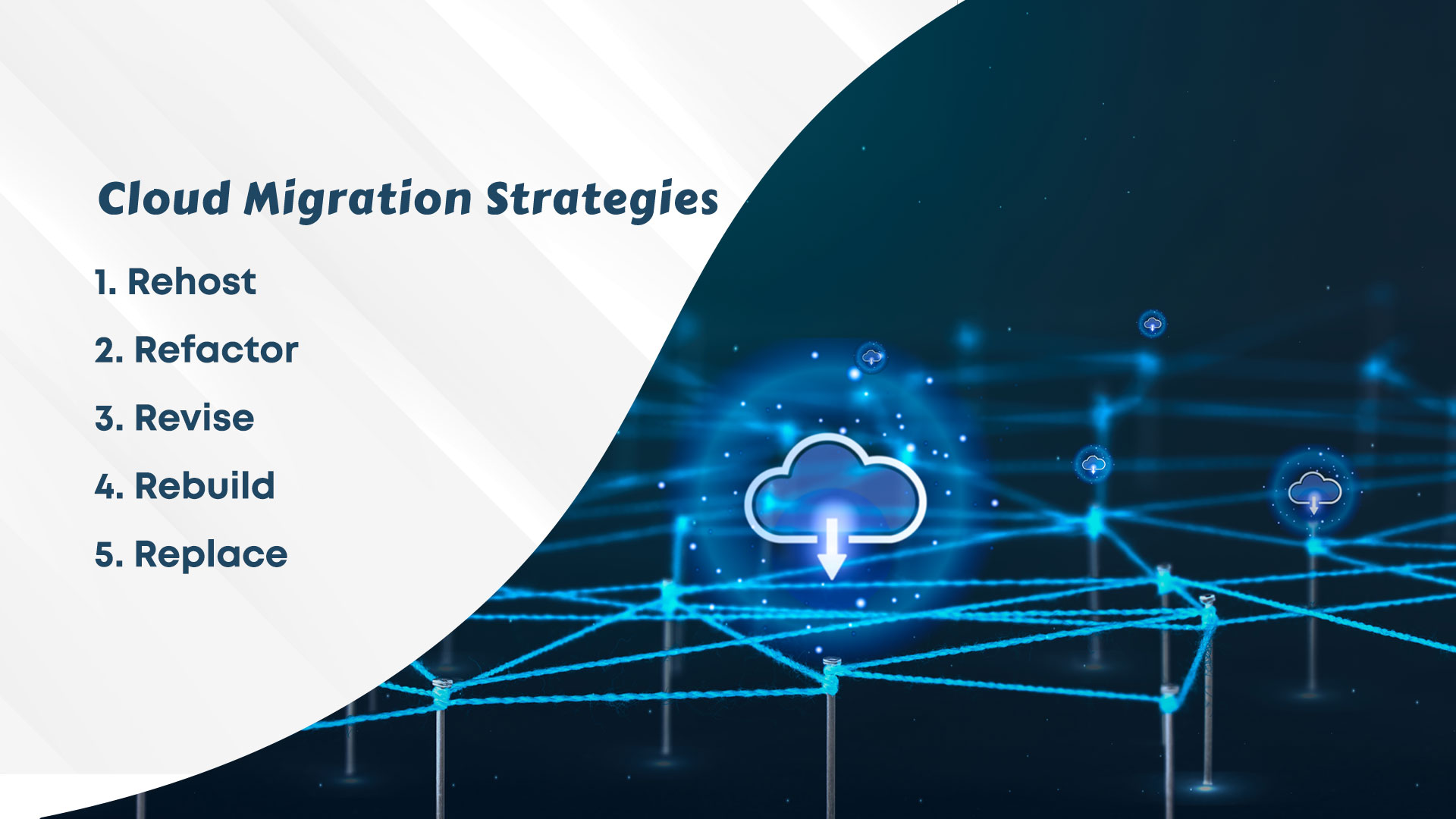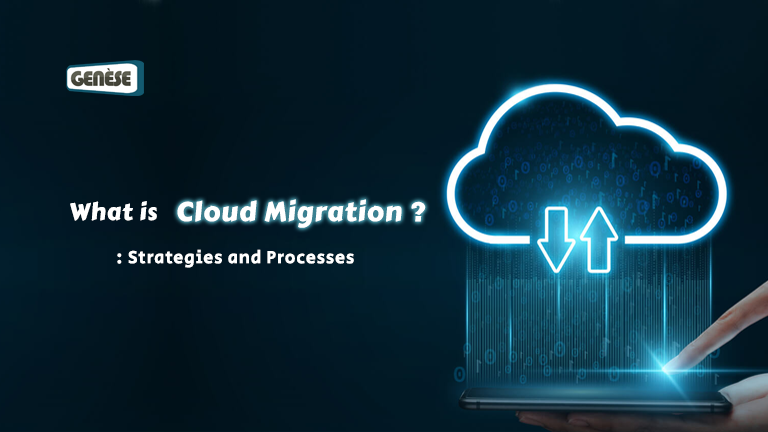Cloud migration occurs when a company migrates some or all of its data center capabilities to the cloud, often to run on cloud-based infrastructure offered by a public cloud service provider such as AWS, Google Cloud, or Microsoft Azure.
As more businesses migrate to the cloud, migrations inside the cloud are becoming more common, as businesses transfer between different cloud providers (known as cloud-to-cloud migration). However, there are a few important considerations for individuals making their first foray into the cloud, which we’ll go over here.
Benefits of Migrating to the Cloud
Some of the advantages that drive businesses to shift resources to the public cloud are as follows:
I. Scalability
Cloud computing can readily grow to serve greater workloads and more users than on-premises equipment. Organizations have to acquire and deploy physical servers, software licenses, storage, and network equipment to scale up commercial services in traditional IT systems.
II. Cost
Cloud providers deliver maintenance and support that help you save money on operational costs and make maintenance tasks like updating easier. Companies that shift to the cloud may save a lot of money on IT operations. They may devote more resources to innovation, such as the creation of new products or the improvement of existing ones.
III. Performance
Migrating to the cloud has the potential to increase performance and end-user experience. Cloud-hosted applications and websites may quickly grow to serve more users or have higher throughput, and they can run in geographical areas close to ending users to decrease network latency.
IV. Digital experience
Users, whether employees or consumers, may access cloud services and data from any location. This adds to digital transformation, improves customer experience, and offers professionals with current, adaptable tools.
What are the Challenges of Cloud Migration?
Cloud migrations may be complicated and risky. Here are some of the primary problems that many firms are encountering when they migrate resources to the cloud.
- Inadequate Strategy
Many companies begin their cloud migration without investing enough time and attention to their plan. For effective cloud adoption and implementation, an end-to-end cloud migration plan is necessary. Each application and dataset may have distinct requirements and issues, necessitating a distinct cloud migration technique. Each workload moved to the cloud must have a compelling business case.
- Management of Costs
Many businesses have not defined clear KPIs to determine what they expect to spend or save after shifting to the cloud. This makes determining whether migration was economically effective a challenge. Furthermore, because public clouds are dynamic, prices can change quickly as new services are added and application demand grows.
- Lock-In of Vendors
Vendor lock-in is a prevalent issue for cloud technology adopters. Cloud companies provide a wide range of services, but many of them are not transferable to other cloud platforms. Workload migration from one cloud to another is a time-consuming and costly procedure. Many firms begin adopting cloud services only to discover that switching providers is difficult if the existing supplier does not meet their needs.
- Data Security and Compliance
Data security and compliance are key obstacles to cloud migration. Cloud services have a risk-based model, which means that they are responsible for infrastructure security while the customer is liable for data and workload security.
While the cloud provider may provide sophisticated security measures, it is your organization’s job to effectively set up them and ensure that all services and apps have the right security controls.
The migration procedure itself poses security concerns. Transferring huge amounts of sensitive data and establishing access restrictions for apps across many environments exposes you to severe risk.
Cloud Migration Strategies
Gartner has identified the “5 Rs” cloud migration methodologies. Organizations considering cloud migration should examine which migration technique best meets their goals. Each of these is described briefly below:
1. Rehost:
Rehosting, often known as ‘lift and shift,’ includes the use of infrastructure-as-a-service (IaaS). Simply reinstall your current data and apps to the cloud server. This is simple to implement and hence appropriate for firms who are unfamiliar with cloud infrastructures. It’s also a fantastic solution if changing the code is challenging and you want to keep your apps intact.
2. Refactor:
Refactoring, often known as ‘pull, tweak, and move,’ is the process of fine-tuning and improving your cloud-based applications. A platform-as-a-service (PaaS) paradigm is used in this scenario. The apps’ underlying architecture stays constant, but changes are made to allow for greater usage of cloud-based tools.
3. Revise:
Revising expands on prior techniques, necessitating more major modifications to the architecture and code of the cloud-based services. This is done to allow apps to fully utilize the cloud services offered, which may necessitate considerable code modifications. This method needs forethought and specialized expertise.
4. Rebuild:
Rebuilding extends the Revise technique by removing the old code base and replacing it with a new one. This is a lengthy procedure that is only explored when firms determine that their old solutions do not fulfill current business demands.
5. Replace:
Replacing is another answer to the problems that motivate the Rebuild method. The distinction here is that the corporation does not completely revamp its native application. This entails moving to a vendor-provided third-party, prebuilt application. The only thing you migrate from your previous application is the data, and the rest of the system is brand new.

Cloud Migration Processes
- Cloud Migration Strategy
One of the first actions to take before moving data to the cloud is to identify the use case that will be served by the public cloud. Will it be utilized to help in disaster recovery? DevOps? Hosting business workloads in the cloud completely? Will a hybrid strategy be more appropriate for your deployment?
It is vital to examine your environment and define the elements that will control the migration, such as critical application data, legacy data, and application compatibility, at this point. It is also vital to assess your data reliance: do you have data that must be resynced on a regular basis, data compliance obligations to satisfy, or non-critical data that can be transferred during the first few runs of the migration?
Determining these criteria can assist you in charting a strong strategy for the tools you’ll need during migration, including defining which data needs to be migrated and when, whether the data requires scrubbing, the type of destination volumes to use, and whether encryption of the data is required both at rest and in transit.
2. Migration Business Case
Once you’ve assessed your company’s needs, learn about the services and rates offered by cloud providers and other partners. Determine the anticipated advantages of cloud migration in three dimensions: operational benefits, cost reductions, and architectural enhancements.
Create a business case for each application you intend to transfer to the cloud, demonstrating the predicted total cost of ownership (TCO) on the cloud vs the present TCO. Use cloud cost calculators to forecast future cloud expenses based on reasonable assumptions, such as the quantity and kind of storage required, computer resources, instance types, operating systems, and particular performance and networking needs.
Work with cloud providers to identify your cost-cutting alternatives based on your projected cloud implementation. Cloud providers have a variety of pricing schemes and provide substantial discounts in exchange for a long-term commitment to cloud resources (reserved instances) or a commitment to a specified amount of cloud spending (savings plans). These savings must be accounted for in your company strategy in order to determine the exact long-term cost of your cloud migration.
3. Cloud Data Migration Execution
After your environment has been examined and a strategy has been developed, you must carry out your migration. The major issue here is to complete your migration with little disturbance to normal operations, at the lowest possible cost, and in the shortest amount of time.
If your data becomes inaccessible to users during a move, your company operations may suffer. The same is true after the first migration when you continue to sync and upgrade your systems. Before migrating another workload element, each individual workload element should be proven to operate in the new environment.
You’ll also need to figure out how to synchronize changes made to the source data while the migration is in progress. AWS, Google Cloud, and Azure all have tools to help with cloud and data migration.
4. Ongoing Maintenance
Once data has been moved to the cloud, it is critical to guarantee that it is optimized, safe, and easily retrievable in the future. It also aids in the detection of real-time changes to essential infrastructure and the prediction of workload contentions.
In addition to real-time monitoring, you should analyze the security of data at rest to verify that working in your new environment complies with regulatory compliance rules such as HIPAA and GDPR.
Another factor to consider is achieving continuous performance and availability standards to guarantee your RPO and RTO targets are met if they change.
Migrating to the cloud can bring a number of benefits to organizations, including increased scalability, flexibility, and cost savings. However, it’s important to carefully plan and execute the migration process to ensure a smooth transition and minimize disruption to business operations.
Migrate to the cloud with Genese expertise, we are a pioneer for cloud computing in Nepal. We are a provider of reliable Cloud services and solutions. We help you with DevOps, Infrastructure, Architecture Design, MVP Scaling Services, and Infrastructure Migration Services. If you are looking to start Cloud services for your business Click here.
 Finland
Finland Bangladesh
Bangladesh
